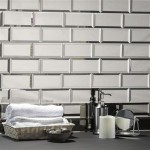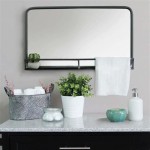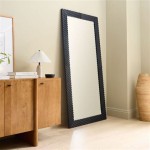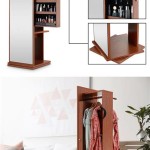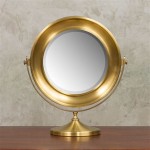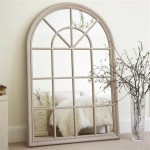Led Mirrors for Bathrooms
LED mirrors have become increasingly popular in bathroom renovations, offering a blend of functionality, style, and energy efficiency. These mirrors incorporate integrated LED lights, providing illumination for grooming tasks and enhancing the overall ambiance of the bathroom. This article explores the various aspects of LED bathroom mirrors, from their benefits and features to installation and maintenance considerations.
One of the primary advantages of LED mirrors is their superior illumination compared to traditional bathroom lighting. The integrated LEDs provide bright, even light distribution across the mirror surface, eliminating shadows and making tasks such as shaving, applying makeup, and styling hair easier. This focused lighting also reduces the need for additional overhead or vanity lights, contributing to a cleaner, less cluttered aesthetic.
Energy efficiency is another key benefit. LEDs consume significantly less energy compared to incandescent or halogen bulbs, resulting in lower electricity bills. Their long lifespan also reduces the frequency of replacements, further contributing to cost savings and minimizing environmental impact. Many LED mirrors feature adjustable brightness levels, allowing users to customize the lighting to their preference and conserve energy further.
LED mirrors offer a variety of styles and designs to complement diverse bathroom aesthetics. From minimalist frameless designs to more ornate framed options, there's an LED mirror to suit every taste. Mirrors are available in various shapes and sizes, including rectangular, square, round, and oval, offering flexibility in design integration. Some models incorporate features like anti-fogging technology, demister pads, and built-in Bluetooth speakers or digital clocks, adding further convenience and functionality.
The color temperature of the LED lights is an important consideration. Warm white light (2700-3000K) creates a relaxing and inviting atmosphere, mimicking the glow of incandescent bulbs. Cool white light (4000-5000K) provides a brighter, more energizing illumination, suitable for task-oriented activities. Some LED mirrors offer adjustable color temperature settings, allowing users to switch between warm and cool white light depending on their needs.
Before purchasing an LED mirror, it's essential to consider the size and dimensions of the bathroom. A large mirror can make a small bathroom feel more spacious, while a smaller mirror might be more appropriate for a powder room. The placement of the mirror is also critical. It should be positioned at a comfortable height for all users and ideally centered above the vanity.
Installation of LED mirrors varies depending on the model and the existing bathroom wiring. Some mirrors are designed for direct wiring into the electrical system, while others may plug into a standard outlet. It's crucial to follow the manufacturer's instructions carefully and adhere to all local electrical codes. If unsure about the installation process, it's recommended to consult a qualified electrician.
Maintenance of LED mirrors is relatively simple. The mirror surface can be cleaned with a standard glass cleaner, avoiding abrasive materials that could scratch the surface. The LED lights typically require minimal maintenance, with their long lifespan reducing the need for frequent replacements. However, if a light does fail, it's essential to consult the manufacturer's instructions for replacement procedures.
The IP rating (Ingress Protection) of an LED mirror indicates its level of protection against dust and moisture. Bathrooms are inherently humid environments, so it's essential to choose a mirror with an appropriate IP rating. A minimum rating of IP44 is generally recommended for bathroom use, indicating protection against splashing water. Higher IP ratings, such as IP65 or IP67, offer greater protection against water jets and immersion, making them suitable for wet rooms or areas directly exposed to shower spray.
The CRI (Color Rendering Index) of an LED mirror measures its ability to accurately render colors compared to natural light. A higher CRI indicates better color accuracy, which is crucial for tasks like applying makeup. A CRI of 90 or higher is generally considered excellent, providing true-to-life color representation.
Beyond the standard illuminated mirrors, innovations in LED mirror technology include features like integrated defoggers, which prevent the mirror from steaming up during showers. Touch controls allow users to adjust brightness and color temperature with a simple touch of the mirror surface. Smart mirrors with integrated Bluetooth connectivity enable users to stream music or make hands-free calls while using the mirror. These advancements continue to elevate the functionality and convenience of LED bathroom mirrors.

Commercial Lighted Mirrors By Electric Mirror Preferred Designers

Bathroom Mirrors Better Bathrooms

Artforma Rectangular Bathroom Mirror With Led Light Frameline L49

How To Choose The Best Bathroom Led Mirror Lycos Ceramic Pvt Ltd

Bathroom Led Mirrors Vanity Mirror With Lights Neutypechic

Hib Bellus Led Mirror Illuminated Bathroom Mirrors Bath More

Commercial Lighted Mirrors By Electric Mirror Preferred Designers

Best Lighted Bathroom Mirrors To Buy In 2024

Led Bathroom Mirror Ningbo Corelead Professional Factory

Keonjinn Led Mirror For Bathroom 24 X 36 Inch Front Lighted Modern Vanity Mirrors With 3 Colors Lights 3000k 4500k 6000k Rectangular Wall Mounted Horizontal Vertical Com


